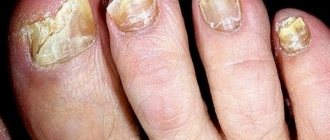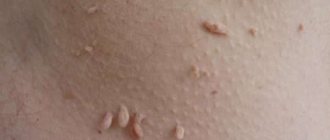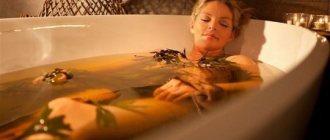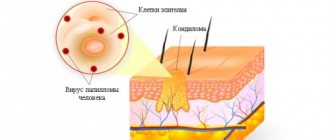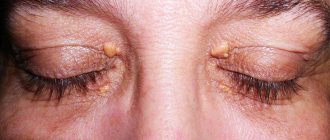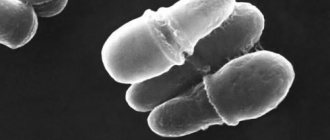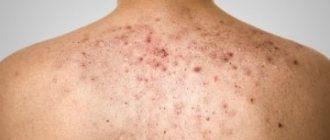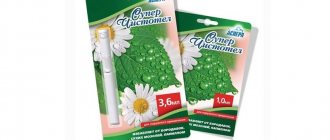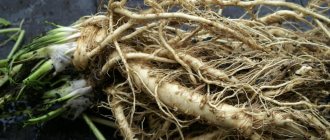Description of the disease
Onychomycosis is infection of the nail plates by fungal microorganisms. Typically, the causative agents of nail fungus are microorganisms of the genus Trichophyton, although other types of fungi can also cause the disease.
Fungus is a contagious disease. Mycosis can be contracted from other people by:
- visiting saunas, swimming pools without personal shoes,
- wearing other people's socks, shoes,
- sharing towels, manicure supplies, etc.
The food source for the fungus is keratins. These proteins are found in the deteriorating tissues of the nail plate.
Photo: VidEst / Shutterstock.com
Fungi most often affect the toenails. After all, feet are usually looked after less and washed less often. Feet are more likely to sweat due to tight shoes and poorly breathable stockings and socks. The disease is more often observed in people with weakened immune systems, diabetes, and blood and vascular diseases. Adults are more likely to suffer from onychomycosis than children. Fungal nail infection is a common disease, affecting every fifth person.
The unpleasant properties of the fungus include not only cosmetic defects and skin itching, but also:
- possible development of bacterial skin infections,
- loss of a nail,
- spread of infection to other family members.
Therefore, the treatment of onychomycosis must be taken seriously.
Symptoms
The main symptoms of fungus are changes in the color and shape of the nail, its structure. It may affect one toenail or fingernail or several at once. The nails become yellowish or brown, become thinner or, conversely, become too thick. In this case, the surface of the nail becomes rough, uneven and loose. Nails may peel and become deformed. The disease may be accompanied by itching and pain.
Symptoms of fungal nails are often similar to deformation of the nail plates of a non-infectious nature. On the other hand, physical deformations and injuries to the nail plates often contribute to the growth of fungus on them.
Is it possible to cure with iodine, how quickly does it help?
Since iodine is a strong bactericidal agent, it is able to quickly stop the first manifestations and proliferation of the fungus. It also blocks the entry and proliferation of fungus on healthy nail plates.
The most important positive quality of iodine in the treatment of mycosis of the nail is that it is absolutely harmless. Iodine can be used even for children.
Unlike medical antifungal drugs, which are recommended for treatment for about 4-6 months, treatment of fungal infections on toenails or fingernails with iodine is much faster, just 3-4 weeks of regular use of iodine infusion, it kills the fungus and not a trace remains of it.
Benefits of treating fungus with iodine
Iodine has many advantages over other antifungal drugs. Firstly, it is a very cheap and accessible product. Therefore, a long course of nail treatment at home will not lead to significant financial expenses. In addition, iodine is a reliable and proven remedy. It has a minimum of adverse reactions and contraindications and rarely causes allergic reactions. If antifungal ointments are contraindicated for the patient, then treating the fungus at home with iodine preparations remains the best option.
Photo: Food Impressions / Shutterstock.com
Features of iodine treatment
Iodine for toenail fungus will only help in the early stages of the disease. In more advanced forms, it is necessary to undergo complex treatment using chemicals. Iodine is a special substance that can both help and harm a person. It is very important to follow the correct dosage and frequency of use. Otherwise, there is a possibility that the condition will worsen.
Iodine is contraindicated for certain categories of patients. These include:
- having hypersensitivity to the substance;
- prone to allergies;
- having excess iodine in the body.
In all these cases, you should refuse to treat nails with iodine and look for a more suitable option.
In addition, there are several treatment features that must be taken into account when using iodine. These include:
- the substance is suitable for treating not only adults, but also children;
- in moderation it is good for the body;
- the course of treatment must be continuous;
- dosages must be prescribed by a doctor;
- The period of use should be limited to 10 days.
Contraindications and restrictions
Although allergic reactions to iodine are rare, they cannot be completely ruled out. Therefore, before you start treating fungus with iodine, you need to do an allergenicity test. To do this, you need to drop a little iodine on the bend of your elbow and look at the skin reaction. If it is absent, then treatment with iodine is safe.
Iodine can irritate healthy skin if exposed to it continuously. Iodine preparations are contraindicated for thyroid diseases.
If you treat nail fungus with iodine for a long time—several weeks or more—symptoms such as itching, dryness, and peeling of the skin surrounding the nail often occur. In this case, the frequency of procedures must be halved.
Using an iodine solution leads to yellowing of the surface of the nail plate. Outwardly it may look unattractive. True, after stopping therapy, the yellowness is gradually washed away.
During the course of iodine therapy, it is recommended to refrain from visiting the pool, bathhouse, or sauna.
Treatment with iodine alone can be effective in the initial and middle stages of the disease, but in advanced stages it may not help. In this case, in addition to iodine, it is necessary to use antifungal ointments.
How does iodine affect fungus?
Iodine is an indispensable remedy against many types of infection
Iodine against fungus is a powerful remedy for quickly getting rid of the disease. Iodine is a powerful antiseptic, therefore it prevents the spread of pathogenic microflora to healthy nails or epidermis. At the same time, iodine has a fungicidal effect, that is, it affects the cells of pathogenic microflora, disrupting the secretion of special substances due to which the fungus reproduces spores.
Thus, iodine from the fungus acts in two directions at once - it prevents infection of healthy tissues and disrupts the ability of pathogenic microflora to reproduce. As a result of using this simple remedy, the colony gradually dies.
Another positive property of iodine is strengthening the nail plates. Application of this antiseptic makes nails stronger, prevents them from splitting and increases local immunity. The only drawback of treating nail fungus with iodine is the coloring properties of this substance. If a pure iodine solution is applied to the nails, they become yellowish-brown in color, which is very difficult to get rid of.
How long should I treat my nails with iodine?
You cannot treat the fungus at home with local iodine preparations for longer than 2 months in a row. It is recommended to take breaks between courses of treatment.
If the lesion is not too severe, the first results can be noticeable after 1-2 weeks. However, in severe cases, treatment can be lengthy. Sometimes you have to wait for a new nail to grow, which can take several months. During the treatment period, protective varnishes should not be applied to sore nails. Otherwise, the iodine solution will not be able to penetrate deep into the tissue of the nail plate.
Use in children, pregnant and lactating women
Iodine solution can promote many positive effects. However, its use during pregnancy is strictly prohibited. The fact is that iodine tends to be absorbed into tissues, enters the systemic bloodstream, leads to hyperactivity of the thyroid gland, and this can provoke various complications in the fetus.
Therefore, women in delicate situations should not use iodine. This rule also applies to breastfeeding. An excess of iodine in breast milk negatively affects the development of the baby.
Children can be treated. But it is important to observe the dose of the drug. It is also necessary to monitor the condition of the child’s skin, because an allergic reaction is possible. The epidermis in children is thinner than in adults, so therapy is carried out carefully.
Iodine for a fungal infection that affects the nail plates is best used as additional help along with medications. The peculiarity of therapy is the duration of use. Despite the fact that the symptoms disappear quickly enough, the course of treatment cannot be stopped.
The antiseptic quickly relieves itching, burning, peeling of the skin, hyperemia, cracks and other clinical manifestations.
During treatment, it is important to follow the dosage. If it increases, a chemical burn is possible.
To achieve a positive result, it is necessary to prepare in advance for iodine treatment. To do this, you need to make hot softening baths based on soap and soda solution. For three liters of water you will need 20 g of baking soda and the same amount of laundry soap in the form of shavings.
Important addition: How to treat fungus with garlic and onion juice?
Legs hover for 15-30 minutes. Then dry thoroughly with a towel. The heels are treated with pumice, the nails are polished with a file with a coarse abrasive.
The plates are also trimmed with nail scissors - this must be done carefully so as not to damage the skin.
Is it possible to cure an advanced fungus with iodine?
Medical experts believe that nail fungus is a disease that is difficult to treat with medication. That is why most doctors try to combine several treatment methods. Prescribed tablets, antimycotic pharmaceutical creams and folk remedies. The overall effect is better.
Iodine alone will not cure a fungal infection. If at an early stage there is a chance of a successful complete cure, then in advanced cases you cannot do without medication.
When does the effect occur? It is difficult to answer this question precisely because it all depends on various factors. If a person has an early stage of a fungal infection, he uses only iodine, then it becomes better after 2-3 weeks of treatment. When combined with medications, a positive effect is detected after 1-2 weeks.
In advanced cases, you will have to be patient and treat persistently. Improvements appear only after 1 month. You can observe that a healthy nail is growing, the condition of the skin of the heels and the space between the toes has improved.
If using iodine for 2 weeks does not give any result, then it will not help in the future.
Treating nail fungus at home
To treat onychomycosis, iodine-based baths and compresses can be used. Or you can immediately apply the iodine solution to the surface of the nail plate. Often, iodine preparations are combined with other antifungal agents.
Iodine baths are the safest and most effective method of treatment. Preparing an iodine bath is very simple. Water with a volume of 2.5 liters and a temperature of about +45°C is added to a bowl, and 1 teaspoon of iodine solution is added to it. You can add 2 tbsp to the bath. sea salt.
The bath should be taken for 10-15 minutes. This is the optimal time, since the product will have time to penetrate the tissue of the nail plate, and irritation of healthy areas of the skin will be avoided. After completing the procedure, the leg is wiped dry and washed with hydrogen peroxide. If necessary, the affected part of the nail plate is removed. You can then apply an antibacterial or antimycotic ointment to the nail and apply a bandage to the finger. It is recommended to do 3 procedures per week.
You can also prepare a bath with iodine and vinegar (9%). For 1 liter of water, 0.5 ml of iodine solution and 0.5 ml of vinegar are required.
If there is no time or opportunity to carry out such a procedure or the affected area is small, then you can limit yourself to regularly instilling an iodine solution into the nail with a pipette. Before applying the solution, it is advisable to wash your foot with soap. The product penetrates better into the nail plate, which has previously been softened in warm water.
One drop per nail is enough, no need to use more. In this case, you must wait until the drop is absorbed by the surface. The procedure is repeated twice a day - morning and evening. When preventing healthy nail plates, it is necessary to apply a drop to them every 2 or 3 days.
During treatment, a slight burning sensation may occur. This is normal, because iodine is a caustic compound. However, if the burning becomes too strong, then procedures should be performed less frequently.
You can apply iodine solution to your nails using a cotton swab or disk soaked in the solution. In this case, care should be taken to ensure that the solution does not come into contact with healthy skin, as this can cause a burn. To treat sick and healthy nail plates, you cannot use the same stick, so as not to transfer the infection from the first to the second. The course of treatment is a month.
You can also lubricate your nails with a solution containing iodine solution and apple cider vinegar in equal parts. The course of treatment is two weeks, after 10 days the course can be repeated.
Another recipe is iodine with olive oil. You need to mix 20 ml of oil and 3 drops of iodine and moisten a cotton swab in this mixture. Carefully lubricate the sore nails with a cotton swab and allow the composition to absorb for 15 minutes. It is most convenient to treat nails in this way at night. In addition to 3 drops of iodine, you can add 3 drops of lemon juice to the oil. Instead of olive oil, you can use sea buckthorn oil and tea tree oil.
For compresses with iodine, take gauze, fold it several times and moisten it in an iodine solution. The compress is applied to the affected nail plate. It is necessary to keep the gauze on the leg for 50-60 minutes. You can secure it with a piece of fabric or a plastic bag. After removing the compress, do not wash the affected area for 2-3 hours. Compresses must be applied every day. The course of treatment can last up to 2 months.
You can also dilute the iodine solution with olive oil (3-5 drops of iodine per 20 g of oil), or hydrogen peroxide (in equal proportions). A compress soaked in these compounds can be kept overnight.
Treatment with iodine preparations must be carried out on a regular basis, without taking breaks, but not longer than 2 months.
All members of the patient's family must undergo treatment if they are all infected with a fungal infection. Otherwise, there is a high probability of re-infection and relapse. To treat healthy and diseased nail plates, it is necessary to use various manicure tools. It is necessary to monitor foot hygiene, regularly change socks or stockings. It is advisable to wear socks or stockings made of cotton fabrics that are highly breathable.
How does iodine work for onychomycosis?
The solution should be used externally only. It provides antiseptic, fungicidal (destroys fungus), antibacterial and destructive effects. Application neutralizes the inflammatory process, eliminates fungal infection in a relatively short time.
According to patient reviews, the fungus can be cured with iodine if no more than a third of the nail is affected, and the pathological process is at the initial stage. Under other conditions, iodine can be used as an adjuvant remedy - combined with antifungal tablets and ointments.
The antimycotic effect of the drug is due to its ability to fold protein fractions, to which fungal mycelium cells belong, as a result of which the infectious agent quickly dies. The drug does not have a fungistatic effect (inhibition of fungal development).
Iodine also contributes to the destruction of keratin, a component that serves as a food product for pathogenic microflora.
Thus, thanks to iodine, a double attack on the disease is revealed - not only is the fungus destroyed, but its “food” is also eliminated.
Does it help cure fungus or not?
An iodine solution in alcohol is a good antiseptic that has cauterizing properties. It restores damaged nail plates and skin. Thanks to the use of the product, keratin coagulates, as a result of which the fungi are left without “food”.
Can toenail fungus be cured with iodine? The answer is yes, if the disease has not spread much and is at an early stage of development. In advanced cases, it is better to use it as an auxiliary treatment option.
The solution acts directly on the fungus. Which is a definite plus. Another positive quality is the prevention of the spread of infection to adjacent nails and skin. Iodine prevents the fungus from deepening and strengthening its “positions.”
During use, it is recommended to minimize the contact of iodine on healthy nails and skin.

